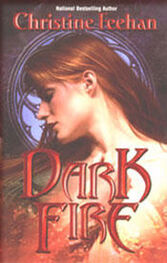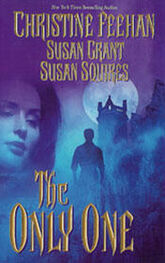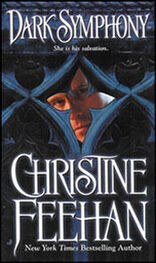What you will be listening to are brief tastes of what would typically be a significantly longer ritual, in which the verse and chorus parts are developed and repeated many times, to be closed by a single rendition of the final invocation.
Sarna Pusm O Maγet(Song to Heal the Earth)
First verse
Ai Emä Maγe ,
Oh, Mother Nature,
Me sívadbin lańaak.
We are your beloved daughters.
Me tappadak, me pusmak o maγet.
We dance to heal the earth.
Me sarnadak, me pusmak o hanyet.
We sing to heal the earth.
Sielanket jutta tedet it,
We join with you now,
Sívank és akaratank és sielank juttanak.
Our hearts and minds and spirits become one.
Second verse
Ai Emä maγe,
Oh, Mother Nature,
Me sívadbin lańaak.
We are your beloved daughters.
Me andak arwadet emänked és me kaŋank o
We pay homage to our mother and call upon the
Põhi és Lõuna, Ida és Lääs.
North and South, East and West.
Pide és aldyn és myös belső.
Above and below and within as well.
Gondank o maγenak pusm hän ku olen jama.
Our love of the land heals that which is in need.
Juttanak teval it,
We join with you now,
Maγe maγeval.
Earth to earth.
O pirä elidak weńća.
The circle of life is complete.
7. CARPATHIAN CHANTING TECHNIQUE
As with their healing techniques, the actual “chanting technique” of the Carpathians has much in common with the other shamanistic traditions of the Central Asian steppes. The primary mode of chanting was throat chanting using overtones. Modern examples of this manner of singing can still be found in the Mongolian, Tuvan and Tibetan traditions. You can find an audio example of the Gyuto Tibetan Buddhist monks engaged in throat chanting at: http://www.christinefeehan.com/carpathian_chanting/.
As with Tuva, note on the map the geographical proximity of Tibet to Kazakhstan and the Southern Urals.
The beginning part of the Tibetan chant emphasizes synchronizing all the voices around a single tone, aimed at healing a particular “chakra” of the body. This is fairly typical of the Gyuto throat-chanting tradition, but it is not a significant part of the Carpathian tradition. Nonetheless, it serves as an interesting contrast.
The part of the Gyuto chanting example that is most similar to the Carpathian style of chanting is the midsection, where the men are chanting the words together with great force. The purpose here is not to generate a “healing tone” that will affect a particular “chakra,” but rather to generate as much power as possible for initiating the “out of body” travel, and for fighting the demonic forces that the healer/traveler must face and overcome.
The songs of the Carpathian women (illustrated by their “Lullaby” and their “Song to Heal the Earth”) are part of the same ancient musical and healing tradition as the Lesser and Great Healing Chants of the warrior males. You can hear some of the same instruments in both the male warriors’ healing chants and the women’s “Song to Heal the Earth.” Also, they share the common purpose of generating and directing power. However, the women’s songs are distinctively feminine in character. One immediately noticeable difference is that, while the men speak their words in the manner of a chant, the women sing songs with melodies and harmonies, softening the overall performance. A feminine, nurturing quality is especially evident in the “Lullaby.”
APPENDIX 2. The Carpathian Language
Like all human languages, the language of the Carpathians contains the richness and nuance that can only come from a long history of use. At best we can only touch on some of the main features of the language in this brief appendix: 1. The history of the Carpathian language2. Carpathian grammar and other characteristics of the language3. Examples of the Carpathian language (including the Ritual Words and the Warrior’s Chant)4. A much-abridged Carpathian dictionary
1. THE HISTORY OF THE CARPATHIAN LANGUAGE
The Carpathian language of today is essentially identical to the Carpathian language of thousands of years ago. A “dead” language like the Latin of two thousand years ago has evolved into a significantly different modern language (Italian) because of countless generations of speakers and great historical fluctuations. In contrast, many of the speakers of Carpathian from thousands of years ago are still alive. Their presence— coupled with the deliberate isolation of the Carpathians from the other major forces of change in the world—has acted (and continues to act) as a stabilizing force that has preserved the integrity of the language over the centuries. Carpathian culture has also acted as a stabilizing force. For instance, the Ritual Words, the various healing chants (see Appendix 1), and other cultural artifacts have been passed down through the centuries with great fidelity.
One small exception should be noted: the splintering of the Carpathians into separate geographic regions has led to some minor dialectization. However the telepathic link among all Carpathians (as well as each Carpathian’s regular return to his or her homeland) has ensured that the differences among dialects are relatively superficial (e.g., small numbers of new words, minor differences in pronunciation, etc.), since the deeper, internal language of mind-forms has remained the same because of continuous use across space and time.
The Carpathian language was (and still is) the proto-language for the Uralic (or Finno-Ugrian) family of languages. Today, the Uralic languages are spoken in northern, eastern and central Europe and in Siberia. More than twenty-three million people in the world speak languages that can trace their ancestry to Carpathian. Magyar or Hungarian (about fourteen million speakers), Finnish (about five million speakers) and Estonian (about one million speakers) are the three major contemporary descendents of this proto-language. The only factor that unites the more than twenty languages in the Uralic family is that their ancestry can be traced back to a common proto-language—Carpathian—that split (starting some six thousand years ago) into the various languages in the Uralic family. In the same way, European languages such as English and French belong to the better-known Indo-European family and also evolved from a common proto-language ancestor (a different one from Carpathian).
The following table provides a sense for some of the similarities in the language family.
Note:The Finnic/Carpathian “k” shows up often as Hungarian “h.” Similarly, the Finnic/Carpathian “p” often corresponds to the Hungarian “f.”


2. CARPATHIAN GRAMMAR AND OTHER CHARACTERISTICS OF THE LANGUAGE
Idioms.As both an ancient language and a language of an earth people, Carpathian is more inclined toward use of idioms constructed from concrete, “earthy” terms, rather than abstractions. For instance, our modern abstraction “to cherish” is expressed more concretely in Carpathian as “to hold in one’s heart”; the “netherworld” is, in Carpathian, “the land of night, fog and ghosts”; etc.
Читать дальше









